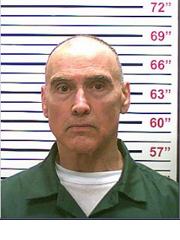I'll be honest. I had never listened to a podcast before on 'This American Life.' Off the bat, you can see how a television story and a radio story differ. First, you usually hear more music as nat sound in your radio story than in your T.V. story. Television has the luxury of using nat sound to help describe a situation without necessarily saying something about it. In radio, you don't have the television there to make it easier for the viewer to understand. You have to describe the scene right before if you want to use nats. At one point during the piece, I heard the reporter say "That's Carl Stroc." It sounded like she described the person as if we could see them. I wonder whether or not she meant to do that. I also noticed a little bit more music in this piece than I'd probably here if somebody decided to do an hour long television story on it. Because radio journalists don't use as much nat sound, they need music to balance that out. After her lead, the reporter put in a five second music nat pop. I loved it.
If anyone knows why NPR reporters speak in such a monotone voice to where a story can put you to sleep, please let me know. I've wondered this before...why people doing stories for this station have no inflection or anything else. Then again, anybody who does public radio never really speaks with much inflection. I find that interesting more than anything else. Also, I know this piece goes on for an entire hour, but the anchor intro goes on for five minutes!!!! Holy cow. I'm not sure a television show could ever get away with an anchor intro that lasted that long. The anchor intro also sounded so informal, so conversational. It reminded me of my best friend standing five feet away from me telling me something.
I also did see some similarities between it and television. I heard a soundbite where the reporter followed it up with a couple more questions. I know this would definitely happen in a television story as well, and I know if this were, it would have been a shot with both the reporter and the source in it. You can tell because you can hear the reporter's voice. If a photographer would just do a closeup on the man telling the reporter something, you'd be hearing a constant voice from somewhere else but not being able to see it would be weird.
I also feel like I can tell where the commercials start in this piece. The reporter often ended with some nat sound and faded it out. I'm sure in radio fading out music and fading it back in has to be much more important than doing that in television. One final note with the music, it also seemed very 'light hearted' for such a serious story. I don't think a television reporter would ever use such 'cheery music' about a boss who pretends to have sex with his secretaries. All in all, you can see how a piece in radio transitions and flows differently than a piece in television. Hearing these challenges gives me a greater amount of respect for those that do radio.
Listen to the podcast

Steve Raucci: the man that ridiculed his coworkers.
What'd you think of the blog?
No comments:
Post a Comment